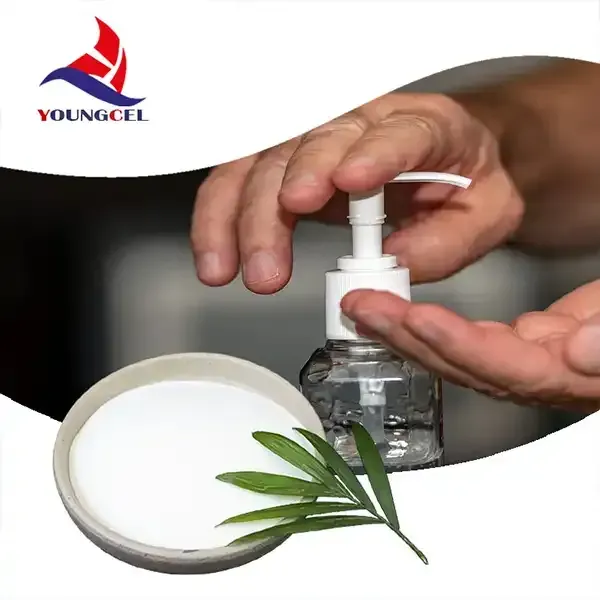Cellulose Ether HPMC Properties, Applications, and Significance
Hydroxypropyl Methylcellulose (HPMC) is a cellulose ether that has gained prominence in various industries due to its versatile properties and functions. As a non-ionic polymer derived from cellulose, HPMC is widely used in pharmaceutical, construction, food, and cosmetic applications. Its significance cannot be overstated, as it plays a crucial role in enhancing product performance and improving user experience.
Properties of HPMC
HPMC is characterized by its ability to form a gel in water, making it an effective thickening agent. It is soluble in hot or cold water, depending on its degree of substitution, allowing it to be used in diverse formulations. The substitution of methyl and hydroxypropyl groups onto the cellulose backbone provides HPMC with unique rheological properties, enabling it to impart viscosity and stability to various products.
The degree of substitution and viscosity can be tailored through different manufacturing processes, allowing manufacturers to customize HPMC for specific applications. The polymer is generally inert, odorless, and tasteless, which makes it suitable for use in food and pharmaceuticals. Additionally, HPMC exhibits biocompatibility and biodegradability, attributes that align with the growing demand for sustainable and eco-friendly materials.
Applications of HPMC
1. Pharmaceuticals In the pharmaceutical industry, HPMC is widely used as a film-forming agent, binder, and controlled-release agent in tablet formulations. Its gel-forming ability allows for the creation of slow-release medications, which enhance the therapeutic effect while minimizing side effects. HPMC is also used in ophthalmic preparations and as a stabilizer in emulsions.
cellulose ether hpmc

2. Construction In the construction sector, HPMC serves as a vital ingredient in adhesives, mortars, and tile grouts. Its water retention properties ensure that the materials remain workable for extended periods, improving their adhesion and overall performance. HPMC also contributes to enhanced durability and flexibility in construction products, making it a preferred choice for modern building materials.
3. Food Industry The food industry utilizes HPMC as a thickener, emulsifier, and stabilizer in a variety of products. It helps maintain texture and consistency in sauces, dressings, and baked goods. Moreover, HPMC can be used to create low-fat and reduced-calorie food products by providing the desired mouthfeel without added calories. It is often viewed as a healthier alternative to traditional thickeners.
4. Cosmetics and Personal Care In cosmetics, HPMC acts as a thickener and stabilizer in creams, lotions, and gels. Its ability to improve texture and spreadability has made it a staple ingredient in many personal care products. Furthermore, HPMC is utilized in hair care products as a film-forming agent that enhances shine and manageability.
Significance of HPMC
The relevance of HPMC lies in its multifunctional characteristics and its ability to modify the properties of end products across various applications. As industries continue to evolve, the demand for innovative and high-performance materials grows. HPMC meets these challenges by offering unique solutions that cater to the needs of manufacturers and consumers alike.
Moreover, with the increasing emphasis on sustainability, HPMC stands out as a biodegradable option, making it an appealing choice for environmentally conscious consumers. Its diverse applications highlight its adaptability and essential role in enhancing product functionality while adhering to modern regulatory standards.
In conclusion, Hydroxypropyl Methylcellulose (HPMC) is a remarkable cellulose ether with vast applications and significant importance across multiple industries. Its unique properties and versatility make it an indispensable ingredient in pharmaceuticals, construction, food, and cosmetics, ensuring that it remains a critical component in the development of innovative products. As research continues to advance, HPMC's role is expected to grow, leading to new applications and enhanced functionalities that meet the demands of an evolving market.
-
HPMC Powder Wall PuttyNewsSep.01,2025
-
High Quality HPMC for ConstructionNewsSep.01,2025
-
Enhance Your Formulations with MHEC PowderNewsSep.01,2025
-
Premium Detergent Grade HPMC Hydroxypropyl Methylcellulose ThickenerNewsSep.01,2025
-
Premium Detergent Grade HPMC Hydroxypropyl Methylcellulose: Superior Thickening & StabilityNewsAug.31,2025
-
HEC 100000 Hydroxyethylcellulose for Paint | Superior ThickeningNewsAug.30,2025




